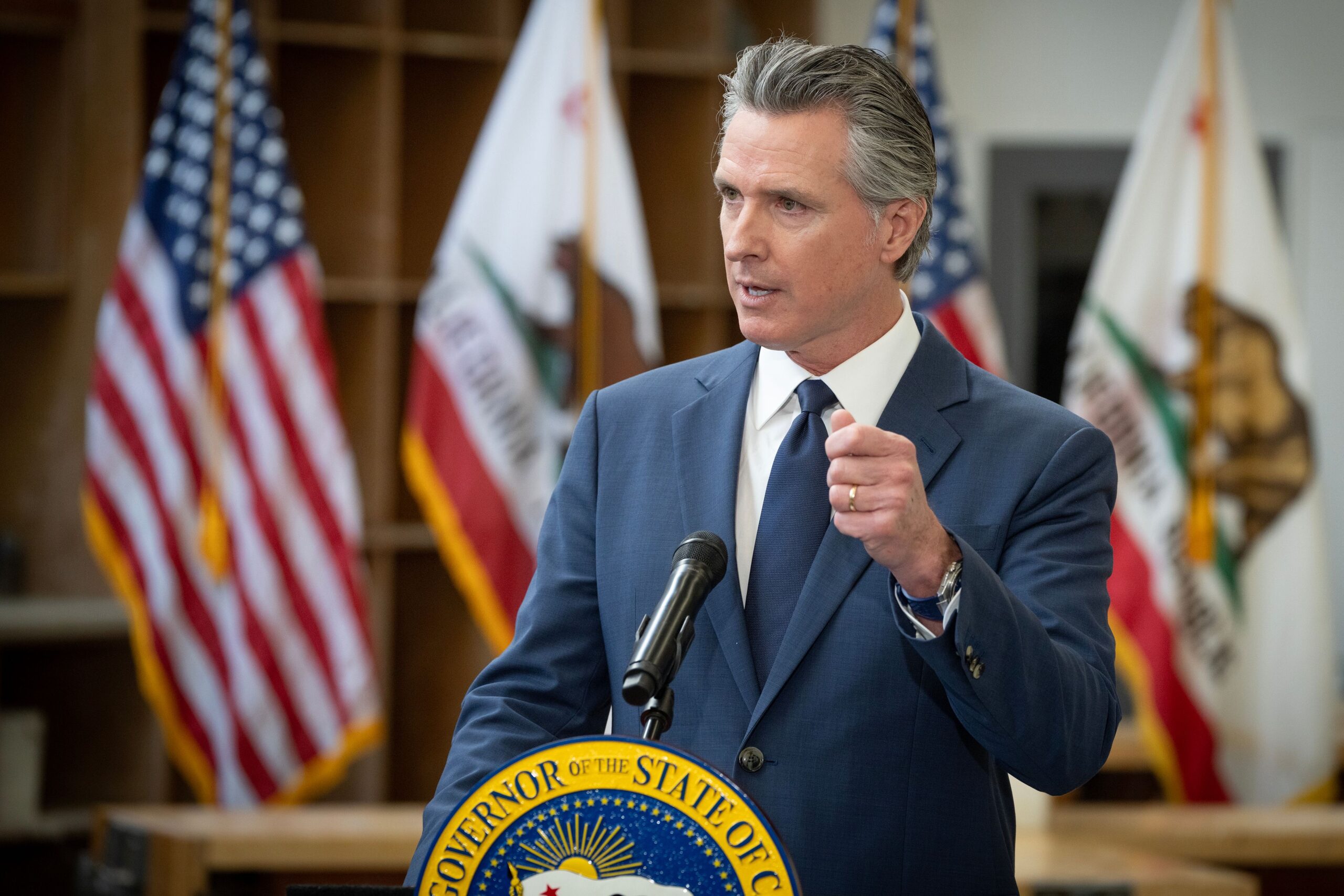California is once again at the center of a political earthquake — and this time, it’s not just about budgets, homelessness, or Gavin Newsom’s presidential ambitions. Republican Assembly leader James Gallagher has announced that he will introduce a resolution to split California into two separate states, claiming that millions of inland residents have been “silenced” and “stripped of representation” for far too long.

The bold and shocking proposal, which Gallagher promises to unveil in detail during a Wednesday press conference at the State Capitol, is being described by insiders as the biggest political rebellion against Newsom’s power yet.
A Direct Strike Against Newsom
At the heart of the controversy is Newsom’s recent congressional map overhaul, a redistricting effort that Republicans argue was designed to consolidate Democratic dominance and weaken rural, inland voices. Gallagher, who represents Northern California’s agricultural heartland, says his constituents are “done being ignored” by Sacramento elites and Hollywood billionaires.
“This isn’t just about politics — it’s about fairness,” Gallagher reportedly told allies in private conversations leaked to local media. “Inland California has been taxed, regulated, and dictated to for decades without real representation. If Newsom can manipulate district lines to erase our voices, then we will take matters into our own hands.”
His proposed resolution would not only spark a legal firestorm in California but could also ignite a national debate over whether states have the right to self-divide for political survival.
History Repeats Itself?
This isn’t the first time Californians have flirted with the idea of breaking up the state. From the 1859 Pico Act to Silicon Valley billionaire Tim Draper’s infamous “Six Californias” initiative in 2014, secessionist dreams have flared up whenever cultural and political divides grew too sharp. But Gallagher’s move comes at a particularly explosive moment:
-
Crime and homelessness dominate headlines in San Francisco and Los Angeles.
-
Inland communities are battling water shortages and crushing regulations.
-
The cultural gulf between rural farmers and coastal tech elites is wider than ever.
Unlike past proposals, Gallagher’s resolution frames the split not as a quirky experiment, but as a desperate act of survival for millions of Californians who feel disenfranchised.
A Rallying Cry for Forgotten Californians
Gallagher’s push has already gained traction on conservative social media, where hashtags like #FreeInlandCalifornia and #TwoStatesNow began trending within hours of his announcement. Some activists are comparing the fight to Brexit, calling it “CalExit 2.0 — not from America, but from California itself.”
“Sacramento politicians laugh at us while they pass laws that destroy our businesses,” said one small farmer in Butte County. “Gallagher is the first leader with the guts to stand up and say enough is enough.”
Democrats Fire Back
Predictably, Democrats are blasting Gallagher’s proposal as “reckless” and “unconstitutional.” Newsom’s spokesperson dismissed the resolution as a “political stunt by a desperate minority party”, claiming that Californians are more united than ever under Democratic leadership.
But critics say that attitude proves Gallagher’s point — that coastal elites have grown tone-deaf to inland frustrations, preferring to dismiss them rather than address them.
Some political analysts warn that even if the resolution has no chance of passing the Legislature, it could still reshape the national conversation heading into the 2026 midterms. “This is red meat for Republicans nationwide,” one strategist told Fox News. “It’s about exposing the Democratic machine in California and turning rural rage into a rallying cry.”
What Happens Next
Gallagher is expected to lay out a roadmap that would petition Congress to approve the creation of a second state carved out of inland California counties. Under Article IV of the Constitution, both Congress and the California Legislature would need to approve the split — a virtually impossible task given Democratic supermajorities.
But Gallagher’s allies argue that even introducing the resolution forces Democrats to confront uncomfortable questions: Why are rural Californians fleeing in record numbers? Why does the state that prides itself on diversity and inclusion have some of the deepest political divides in America?
The Bigger Picture
Whether or not Gallagher’s plan ever comes close to reality, it has already succeeded in pushing California’s cultural civil war into the spotlight. For Republicans, it’s a chance to rally frustrated voters who feel suffocated by Sacramento’s one-party rule. For Democrats, it’s a wake-up call that the inland revolt is no longer just background noise — it’s knocking on the Capitol door.
One thing is certain: by Wednesday, when Gallagher steps up to the microphone, all eyes will be on Sacramento. The question is no longer whether California is divided. The question is whether the divide has finally reached its breaking point.





